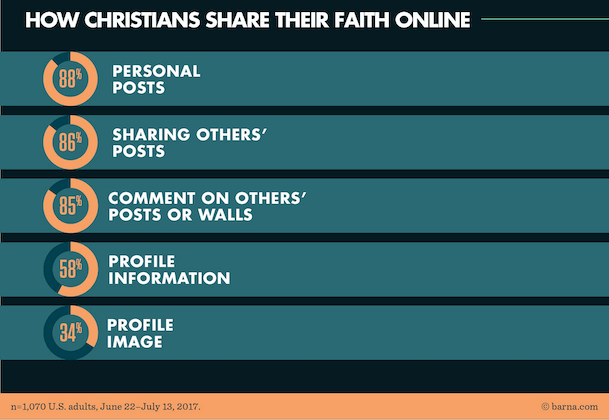Blog Article
Volunteers and Ministry Leaders as Online Ambassadors
Connect7 · Editorial Team
· · 11 Min
Social media has become an essential tool for churches looking to connect with their communities, inspire spiritual growth, and welcome new visitors. Yet for many congregations, the biggest challenge isn’t deciding whether to be on social media—it’s figuring out how to manage multiple platforms without overwhelming any single person. This is where volunteers and ministry leaders can step up as “online ambassadors,” lightening the load while bringing fresh perspectives to your digital outreach.
When trusted staff and volunteers help maintain a church’s online presence, they also share their unique passion and expertise. The result is a well-rounded social media strategy that feels genuine and relatable to various groups in the church. Below are practical steps for empowering volunteers and ministry leaders to contribute effectively, ensuring consistent messaging and a balanced workload.
Why Volunteers and Ministry Leaders Make Great Online Ambassadors
Every church community is shaped by the dedicated individuals who serve in different capacities—children’s ministry, worship teams, youth groups, outreach programs, and more. These volunteers and ministry leaders understand the heart of your church from the inside out. They’ve witnessed spiritual growth, life-changing moments, and everyday acts of kindness that can inspire others when shared online.

By involving them in your social media efforts, you:
-
Add Authentic Voices Each ministry leader brings unique stories, style, and knowledge to the table. Whether it’s the children’s ministry sharing a heartwarming testimony from Saturday/Sunday school or the missions team posting photos from a local service project, these personal touches give life to your church’s social feeds. Plus, considering that members already share their faith online—just as shown in Barna’s infographic—why not ask them to do it for their church?
-
Distribute Responsibility Instead of relying on one staff member—often an already-busy pastor or administrator—you can spread tasks across multiple people. This distribution prevents burnout and ensures that one person doesn’t have to switch between writing posts, editing graphics, responding to comments, and planning events all by themselves.
-
Foster Deeper Engagement Volunteers serving online are more likely to stay engaged in your church’s life throughout the week. When they create content or moderate online conversations, they become more invested in the church’s mission, and that energy is contagious for those who follow and interact with your social platforms.
Setting Clear Roles and Responsibilities

A successful ambassador program starts with clarity. Make sure each volunteer or staff member knows exactly what they’re responsible for and how they should handle that responsibility. Here’s how to define those roles:
-
Assign Social Media Platforms If your church uses multiple social media channels—such as Facebook and Instagram—each platform can serve a unique purpose. Assign volunteers to specific platforms based on their skills and interests. For example, one volunteer might focus on posting sermon highlights on Instagram, while another manages event updates on Facebook. This approach keeps your messaging clear and organized.
-
Agree on Content to Post Decide what type of content each volunteer will create or curate. A youth ministry leader might share midweek devotionals, while a worship leader posts behind-the-scenes clips from rehearsals. Setting content expectations ensures variety while keeping your church’s messaging aligned.
-
Set Goals and Expectations Establish how often volunteers will post and what success looks like. Will posts be daily, weekly, or bi-weekly? Are engagement metrics like shares and comments important? Clear expectations prevent inconsistency and help volunteers manage their time effectively.
-
Nominate an Editor (Optional) If possible, designate a trusted person to review posts before they go live. This could be a staff member or a volunteer with strong communication skills. Their role is to check for consistency in tone, messaging, and branding to maintain a unified voice for your church online.
Ensuring Consistency & Providing Training
Even with multiple ambassadors posting, your church’s social media presence should feel unified. Readers should sense that they’re interacting with the same church, even if different individuals create the posts. Here are some ways to maintain harmony:
-
Develop Brand Guidelines
Without getting overly corporate, establish basic guidelines about voice, color schemes, and fonts. Provide simple tips on how to frame a post or caption so everyone communicates in a welcoming, encouraging tone. If you have a logo or visual branding elements, share files or templates that ambassadors can use. -
Set a Posting Schedule
A shared calendar or spreadsheet can help everyone see when posts are due and plan accordingly. For instance, the children’s ministry volunteer knows to post on Tuesdays, the worship leader posts on Thursdays, and the pastor shares a short devotional on Saturdays. This coordination avoids post overload on certain days and radio silence on others. -
Use Consistent Hashtags
Decide on a few hashtags that reflect your church’s identity or ongoing campaigns, and encourage all ambassadors to use them. This practice helps members easily search for related content and fosters a sense of community across different posts. -
Review Before Posting
If possible, require each piece of content to pass through a quick review process—at least in the early stages. That might mean sending a draft post to the coordinator via email or a messaging platform for quick feedback. Over time, you can simplify reviews once ambassadors are comfortable with expectations. -
Provide Training and Resources
Volunteers and ministry leaders may have varying comfort levels with social media. Offer brief workshops, provide helpful resources, and offer ongoing support to ensure everyone feels confident and knows how to serve effectively. For example, you might discuss how recent changes in online policies impact church outreach by referencing our article “What Meta’s New Speech Policy Means for Your Church?”.
Balancing Accountability and Avoiding Burnout
Empowering volunteers doesn’t mean giving them free rein. Establish boundaries on sensitive topics—like personal prayer requests or political debates—and share a simple crisis policy for negative comments or misinformation. Make sure ambassadors know whom to contact if a situation escalates. Regular feedback sessions allow everyone to assess strengths, brainstorm improvements, and stay aligned with your church’s values.
Yet even dynamic teams can grow overwhelmed. Keep workload realistic: a small number of high-impact posts can be more fruitful than daily filler. Rotate responsibilities or give volunteers breaks if needed, and celebrate small wins to keep spirits high. Simple gestures of appreciation, such as a quick thank-you note, help foster loyalty and enthusiasm.
If your ambassadors are comfortable, consider adding advanced elements over time—like livestreams or Q&A sessions. Gradual expansion helps prevent burnout while maximizing effectiveness. When volunteers feel valued and supported, they’ll continue to serve as capable, energized online ambassadors for your church.
Measuring Success and Adjusting
It’s helpful to know if your efforts are making a difference. While exact metrics might not paint a full picture of spiritual impact, some basic indicators include:
-
Engagement Levels
Track likes, shares, comments, and how often people attend events they discovered online. A steady increase in positive interactions often suggests that your volunteer-driven approach is working. -
Community Feedback
Ask congregation members and newcomers what they think about the church’s online presence. Has it helped them stay informed, feel more connected, or invite friends to events? -
Volunteer Satisfaction
Check in with your ambassadors regularly. Are they still excited about creating content, or do they feel overwhelmed? Adjust responsibilities based on their comfort level and the overall results. -
Spiritual Growth Indicators
Success can look like someone sending a prayer request via direct message, sharing how a post encouraged them, or even stepping forward to serve in a new ministry. Keep your eyes open for these less “quantifiable” but deeply meaningful signs.
Real-World Case Study

To see the tangible impact of digital evangelism, consider the case study of the Central California Conference’s digital approach in the San Francisco Bay Area. Their campaign not only boosted online engagement but also drove meaningful community connections and spiritual growth.
Conclusion
When volunteers and ministry leaders become online ambassadors, they bring authenticity, diversity, and momentum to your church’s social media efforts. By clearly defining roles, offering training, and maintaining a consistent message, you create an environment where multiple voices work in harmony. This not only eases the workload for any single person but also ensures your church’s digital presence remains vibrant, welcoming, and representative of your true community life.
Equipping trusted individuals to post, comment, and interact on behalf of the church fosters a broader sense of ownership. People will see that the same commitment they bring to in-person service—running small groups, singing on the worship team, or greeting at the door—can translate to meaningful ministry online. With the right balance of structure and freedom, ambassadors from across your church family can transform social platforms into a space where faith, encouragement, and community thrive throughout the week.
Want more tips on boosting your church’s online engagement? Check out our article on Measuring Success: Tracking Social Media Metrics for Churches.
